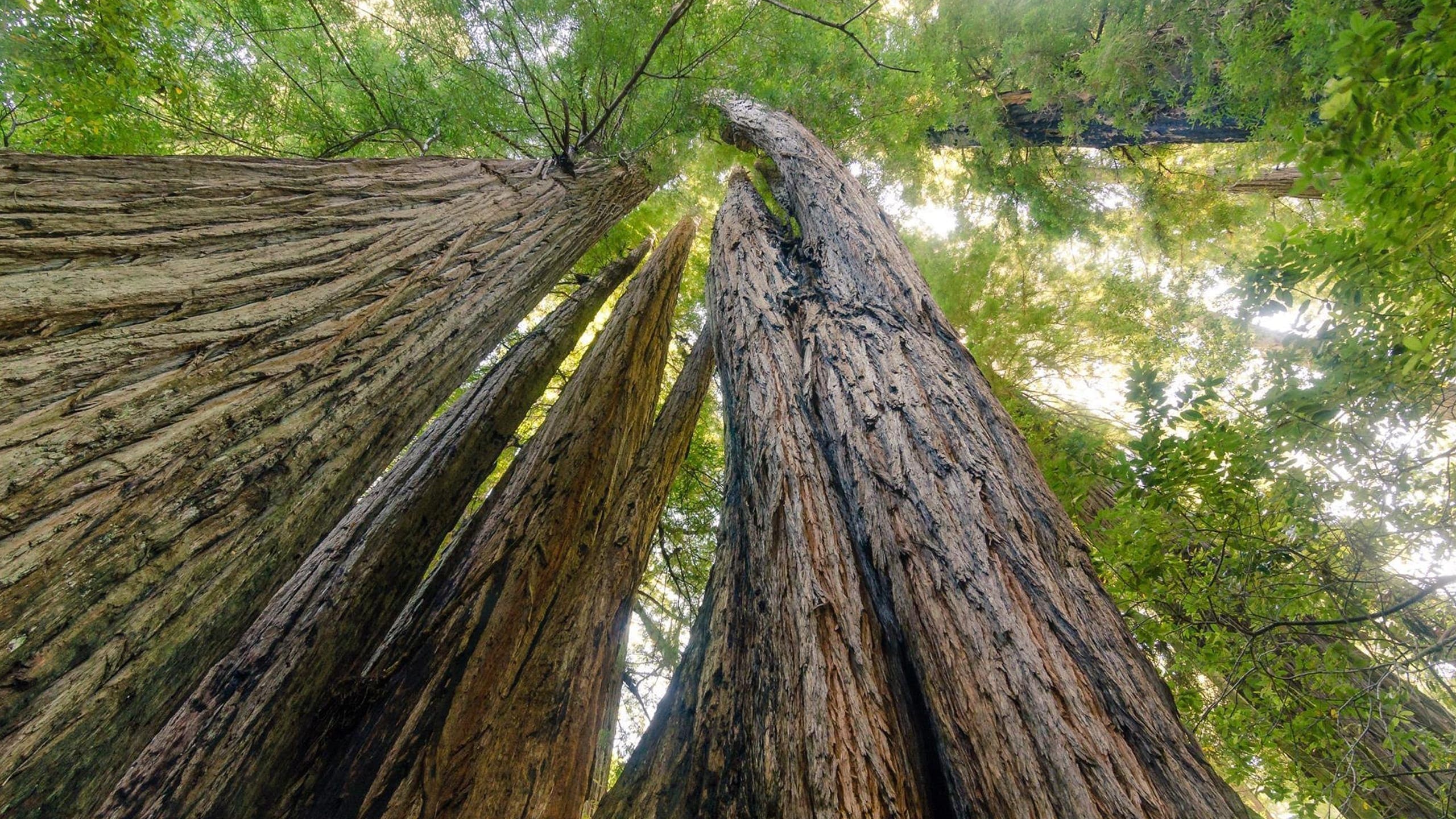About Redwood National and State Parks
Redwood National and State Parks (the parks) in extreme northwestern California, consist of four units: Redwood National Park (under the jurisdiction of the National Park Service) and three state parks—Prairie Creek Redwoods, Del Norte Coast Redwoods, and Jedediah Smith Redwoods State Parks (under the jurisdiction of the California Department of Parks and Recreation). Together, these parks in Del Norte and Humboldt Counties encompass some 131,983 acres, 71,715 acres of which are federally owned and fall within Redwood National Park. This national park system unit stretches about 50 miles in length with 37 miles of coastline and varies in width from 0.5 mile to 8 miles. Park headquarters are in Crescent City, California, which is equidistant (350 miles) between San Francisco, California, and Portland, Oregon. Five information centers provide orientation, information, and trip-planning advice.
Early efforts of the Save the Redwoods League and other conservationists led to the creation of California state parks to protect the area’s remaining old-growth coast redwoods from extensive logging that threatened the existence of the oldest and largest trees. Prairie Creek Redwoods State Park, Del Norte Coast Redwoods State Park, and Jedediah Smith Redwoods State Park were developed in the 1920s and Redwood National Park was established in 1968 and expanded in 1978. Together, these parks preserve about 40,000 acres of old-growth redwood forests, which represent most of the last remaining old-growth coast redwood groves on Earth. In addition, the parks protect the world’s largest coast redwood forests and its tallest living trees. Important not only for their massive size, coast redwood trees anchor one of the most productive ecosystems on Earth. This environment is highly differentiated and provides habitat for numerous plants and animal species, from the forest canopy down to the forest floor.
The diverse ecosystems of northern California have supported human life for thousands of years. The Chilula, Hupa, Tolowa, and Yurok peoples have been intimately connected to the land within Redwood National and State Parks since time immemorial. Descendants of these original residents continue to live nearby and help guide the parks’ interpretation of the ancestors’ lifeways. European American settlers brought vast changes to established patterns of human influence on the landscape, bringing with them new forms of ranching, farming, industry, government, and commerce. Later mechanization and industry practices nearly decimated old-growth redwood forests, which spurred a lengthy environmental movement to save the redwoods. Redwood National Park’s museum collection chronicles all of these aspects of park history and culture. Park staff and partners work to preserve and interpret sites, buildings, and landscapes that reflect this evolving chronology of human influence on the land with places such as the Lyons Ranches Historic District, Bald Hills Archeological District, Me-weehl ‘O Le-gehl (Gann’s Prairie), Prairie Creek Fish Hatchery, and the World War II B-71 Radar Station.
The National Park Service and California Department of Parks and Recreation jointly manage Redwood National and State Parks under a cooperative management agreement first signed in 1994. This agreement was designed to streamline management of the parks by allowing staff, funds, and resources to be shared and used by both agencies. As part of the agreement, both agencies follow a single general management plan / general plan, completed in 2000. Approximately 1,400 acres of federal land and waters under the jurisdiction of the National Park Service within the parks are also within the boundary of the Yurok Reservation. The Yurok Tribe and the Department of the Interior are entering into an agreement that will direct the National Park Service and the Yurok Tribe to engage in a joint comprehensive management plan for the area within both the Yurok and national park boundaries.
Source: Foundation Document – Redwood National and State Parks
Fast Facts:
| Date the Park was Established: | October 2, 1968 |
| Park Area (as of 2019): | 138,999.37 acres (562.5 km2) |
| Recreational Visitors (2018 Total): | 482,536 visitors |


